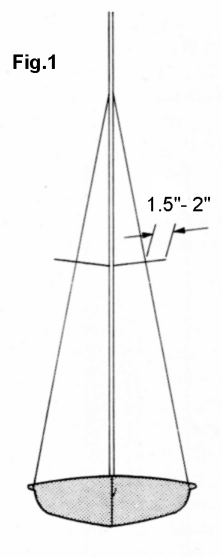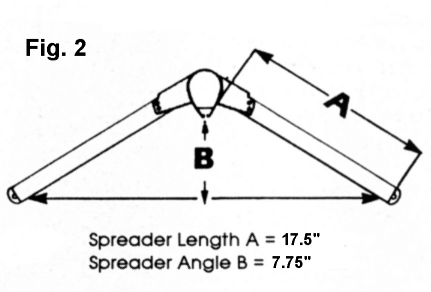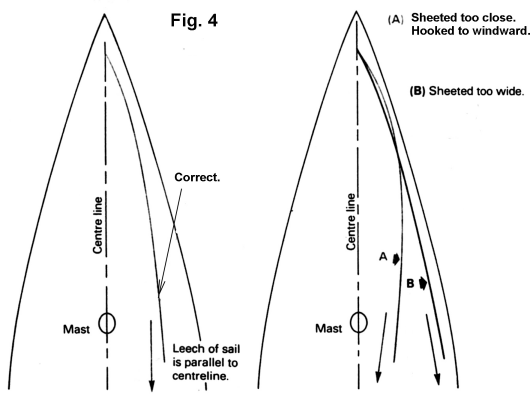THE YACHTING WORLD DAYBOAT ASSOCIATION |
THE YACHTING WORLD DAYBOAT ASSOCIATION |
Hints and Tips to Tune your Dayboat.I have compiled this tuning information after measuring several boats owned by experienced helms. It is intended as a guide for setting up your dayboat, which may be especially useful for new owners who wish to get a little more speed from their boats.  Mast step positionMeasure from stem to front edge of mast, this should be approximately 51" (130cm). Mast rakeThis is best measured with the boat on the water and tying a thin piece of line to the main halyard and a weight attached to the other end. You may have to stand in the boat to do this, but keep the boat level. Measure between aft edge of mast and line, at mast step height. Measurement should be 20" (50cm) or 4.5 degrees. SpreadersWho needs them? After all, some helms have removed them altogether. But they are there to control the amount of mast bend even though the mast is quite stiff. Spreader length controls the sideways bend and the longer they are the stiffer the mast will be and vice versa. Adjust them so that they deflect the shrouds outwards from a straight line as viewed from fore and aft by 1.5 to 2".See fig. 1. If the total crew weight is light use shorter spreaders, this de-powers the rig allowing the main sail to twist open and spill more wind. Spreader angle controls fore and aft bend, the further they are angled aft the more the mast will bend. Again, if your total weight is light, swing them aft a little more, and vice versa. 
Spreader lengthMeasure from side of mast to shroud, should be app. 17.5" (44.5cm). See fig. 2. Spreader angleMeasure from the aft edge of mast to a line stretched between both shrouds at the spreader tips. If you have swinging spreaders make sure they are pulled aft. See fig. 2. Adjust to app. 7.75" (19.5cm). Jib angleMeasure from clew of jib to boat centre line, best done while sailing close hauled with the jib working in a force 3. If you have tracks on the front edge of the thwart move the block to obtain 17" (43cm). This will give you an angle of 15 degrees. Many helms sail at a much closer angle than this, down to 10 degrees, but I feel this is too close. If you are using a Sanders jib it is cut to work best at 15 degees. Jib sheet angleThis is a useful adjustment because it controls the slot shape and jib twist. Sheet tension will also control this to some extent but not so well. The jib sheet fairlead or pulley block thatís fitted to the thwart does not control the jib shape or sheet angle, only the jib angle.  The sheet angle should bisect the luff 48" (122cm) up from the tack. This will give you equal tension between leach and foot. See fig. 3. To obtain this it is better to fit fore and aft tracks than athwartship ones. It is possible on some dayboats including the new ones to fit these tracks to the lower inside edge of the side decks close to the forward end. This will allow you to adjust the sheet angle so that all three windward jib tell-tales lift at the same time as you luff up from close hauled, which indicates that the jib is set correctly, and with the leach having the correct amount of twist. Doing this alteration will of course lose your adjustment of jib angle which will now be 20 degrees or more. This can be overcome by fitting 'barber haulers' to return the jib to the 15 degree angle. Jib halyard tensionThis will control the amount of jib luff sag to leeward and aft, also the amount of jib camber. There is no measurement for this. You will need to trim this one according to the conditions. A small amount of sag, say an inch or so in choppy water, will give you a little more power, but most of the time keep it quite tight and even tighter when its blowing hard.  Jib sailSet the lower three-quarters of the leach so that it is parallel with the lee side of the main when viewed from astern. Keep the lower section running parallel with the boat centre line; donít bring the clew in to close so that it hooks to windward. See fig. 4. Main sail Kicker, Outhaul and CunninghamAll need to be trimmed while sailing in light to medium winds to control sail camber and twist. Use your leach tell-tales as an indication of the wind flow over your sail. The lower two should be streaming aft all the time, with the top one flicking to leeward 20% of the time. The top batten needs to be thinner and more flexible than the other two, to allow the top of the leach to twist open a little more. Adjust the sail to keep the top batten parallel with the boom. In strong winds Outhaul and Cunningham need to be tight to stop the draft moving aft. Kicker will also have to be much tighter but adjust to control twist. The measurements given are an average setting so please experiment. Enjoy your tuning.The measurements given are an average setting so please experiment. Enjoy your tuning. Paul Athay
|